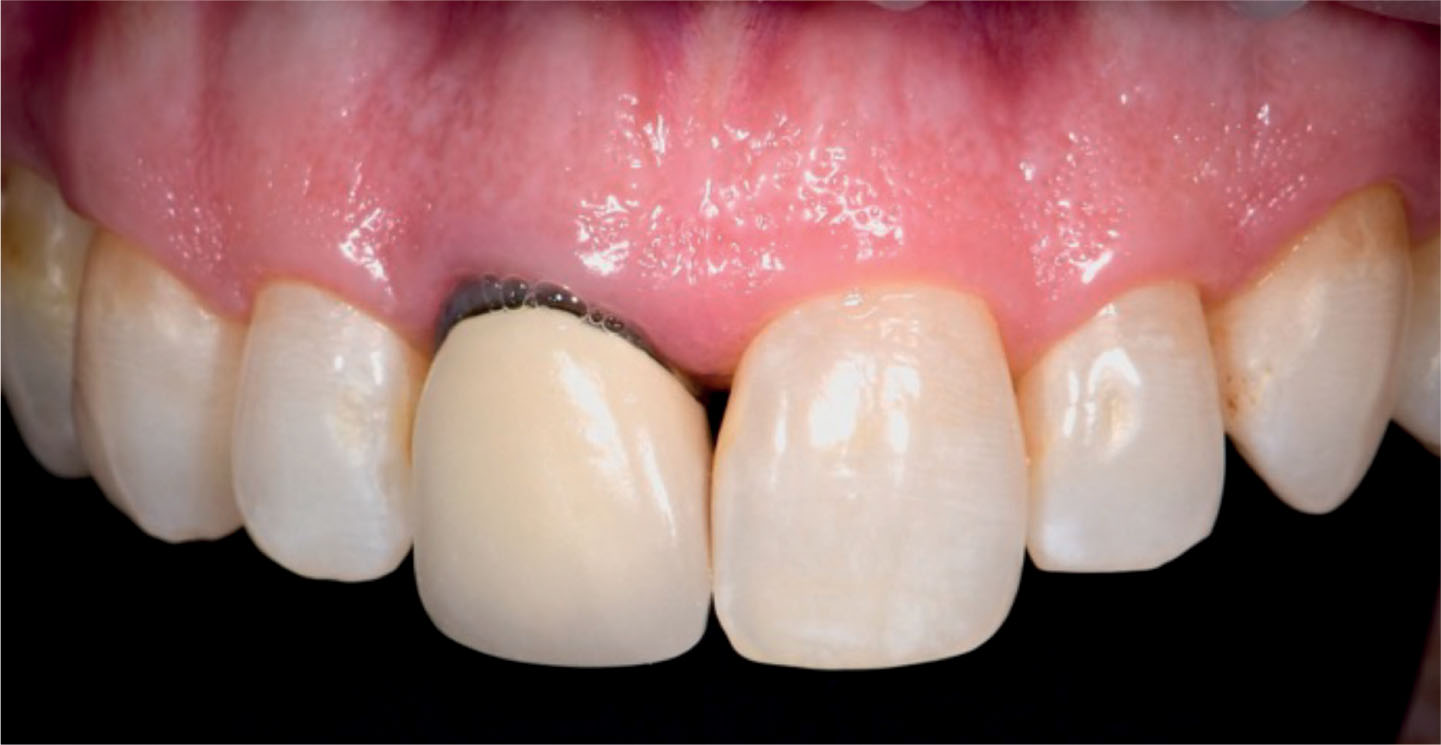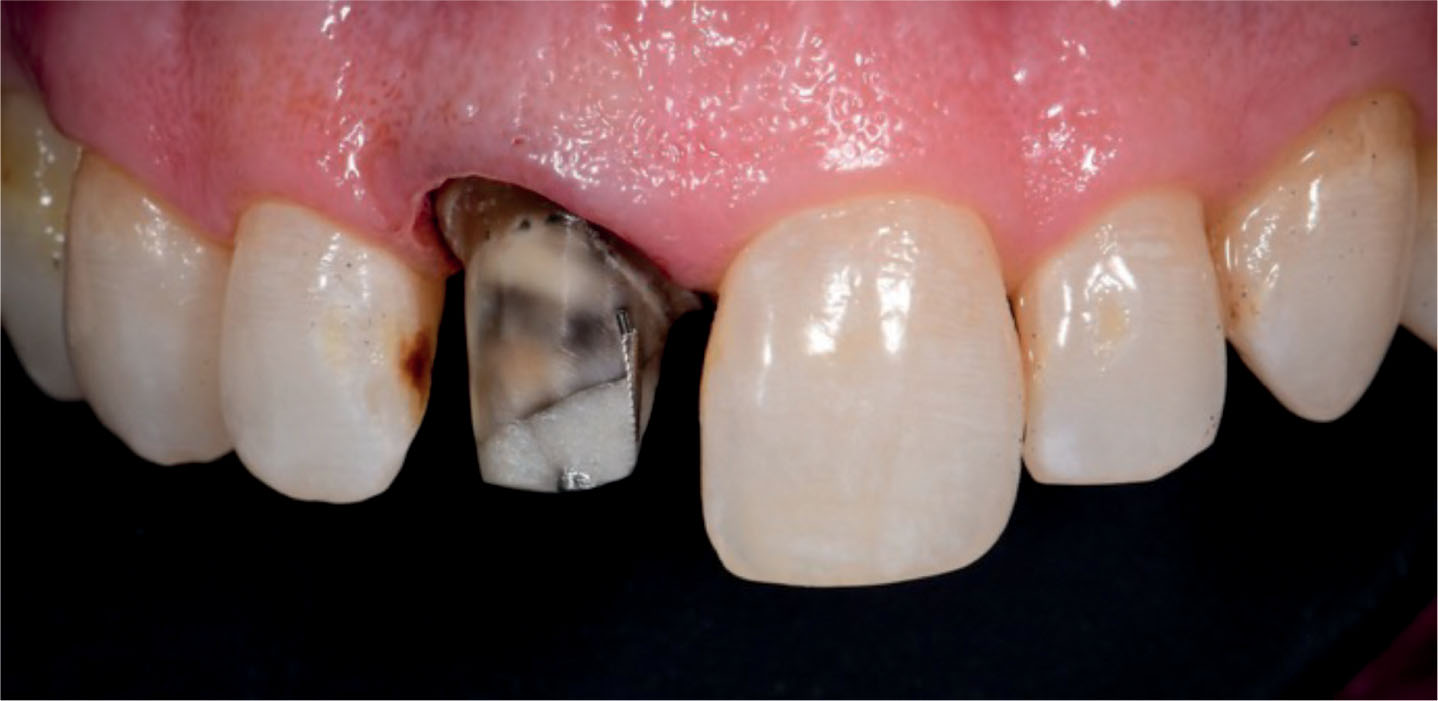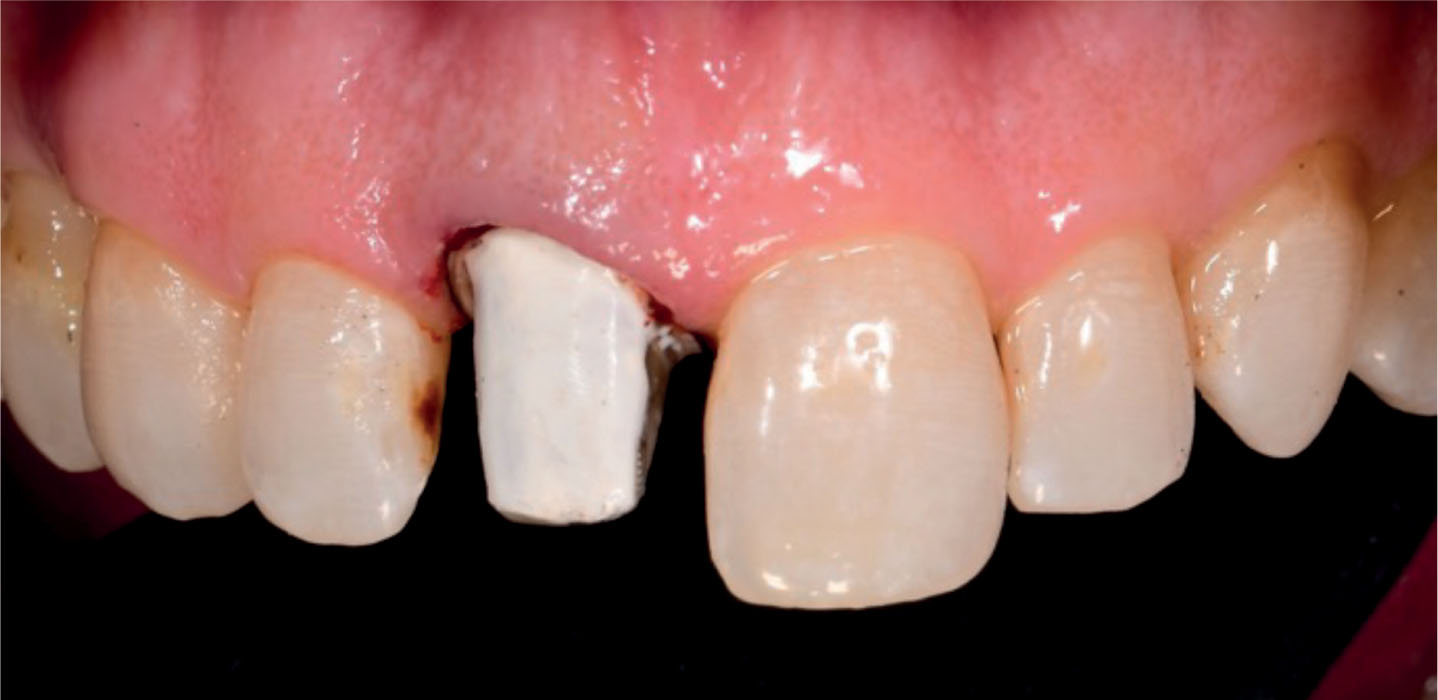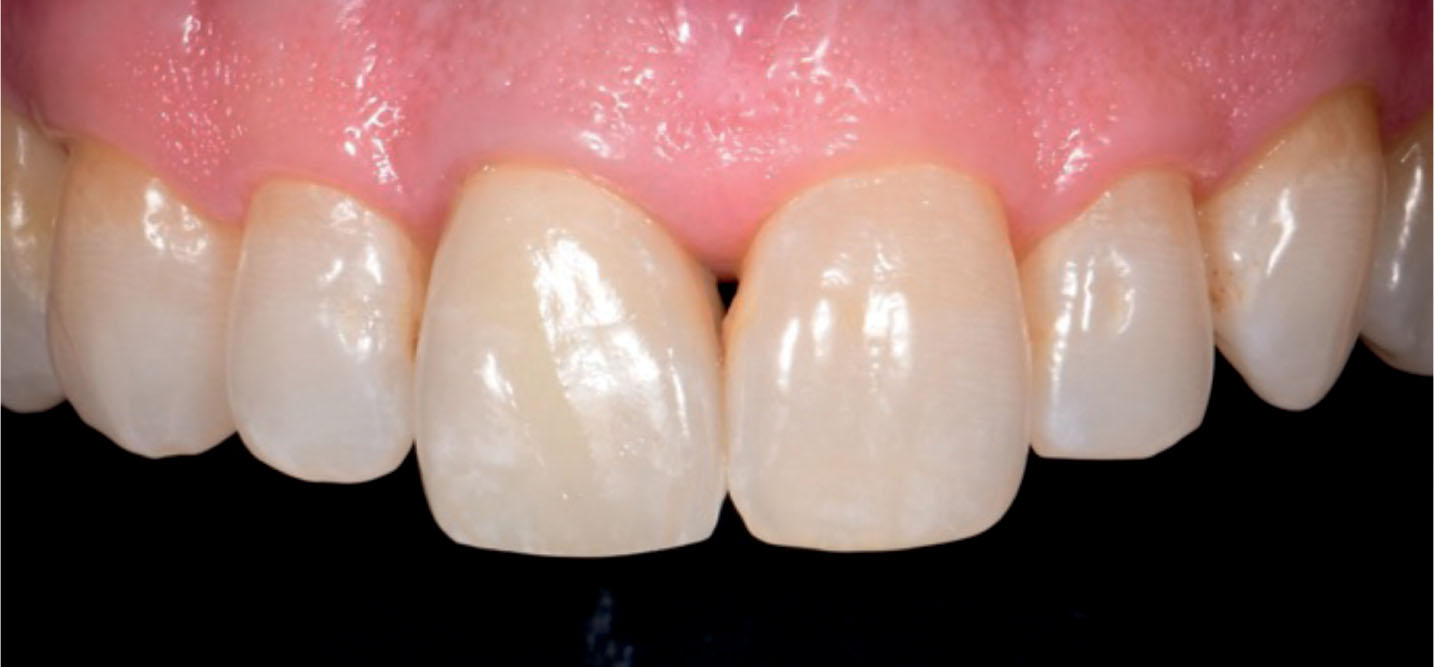References
Top Tip: All-ceramic restorations on discoloured teeth
From Volume 2, Issue 2, June 2025 | Pages 98-99
Article

With the increasing use of all-ceramic restorations, clinicians may encounter difficulty in matching shades on discoloured teeth. This discolouration maybe due to a number of factors including metallic post/cores, previous restorations or other extrinsic/intrinsic factors. However, there is often a need to mask discolouration. With all-ceramic restorations, there is an inherent translucency within the material that may be advantageous in most situations, but may allow shine-through of underlying dark stumps, negatively impacting the final shade match.
There are several strategies that can be adopted to influence the final colour of the restoration including the following.
Choice of resin cement
Most dental companies manufacture different shaded cements as well as opaque resin cements that may assist in blocking discolouration. However, it should be noted that with the cement film thickness being 80–120 microns, the layer of resin cement would be quite thin and at that film thickness may not assist sufficiently in blocking the dark tooth. In the author's experience this might assist 10–15% in improving these situations.
Selecting an opaque ceramic material (zirconia and lithium disilicate restorations)
The vast majority of indirect restorations being placed are available in different opacities and translucencies. Advising the ceramist that the tooth is dark and taking photographs of the stump shade may allow selection of a more opaque ceramic material (e.g. zirconia first generation materials, lithium disilicate medium opacity ingot). The opaque ceramic will block the underlying dark tooth showing through.
Thickness of material and preparation depth
All-ceramic restorations allow a more conservative preparation, but with a dark tooth substrate there may be the need to prepare deeper to allow greater material thickness that will be better at masking the dark tooth. Durães et al reported that the best thickness and opacity combination for masking discoloured dental substrates is to use 1.2-mm thickness and LT (low translucency)/MO (medium opacity) lithium disilicate restorations.1
Porcelain-fused-to-metal (PFM) crown
A conventional PFM restoration with a metallic coping is blocked out with an opaquer allowing the ceramist to start the layering on ‘white canvas’. It should not be forgotten as a possible option; however, clinicians must remember that the depth of preparation would need to be at least 1.5 mm with a shoulder type margin preparation to achieve adequate thickness for the metal coping and the overlying feldspathic porcelain.
Sub-opaquing the stump
The final technique is to sub-opaque the stump with an opaque resin tint. Several manufacturers provide opaque resin tints that are thin and possess titanium dioxide, which effectively scatters light providing white opacity to block out discolouration. This opaquer is similar to a flowable resin that is applied by adhesive bonding. It should be precisely placed with a thin layer that extends along the axial wall and may need to extend subgingivally when tissue biotype is thin and shine through evident in the gingival tissues (Figures 1–4).




Summary
Matching discoloured teeth is always a challenge. Both the clinician and the laboratory team need to work synergistically to achieve an ideal outcome. Communication is paramount to success. Clinicians should provide detailed instructions about the stump colour, as well as allowing sufficient thickness and understanding the selection of materials to effectively block any dark stump colour. Possessing other strategies such as the sub-opaquing method may reduce the difficulty in the shade matching by having an ideal-coloured substrate and should be part of your armamentarium in tackling these tough cases.
